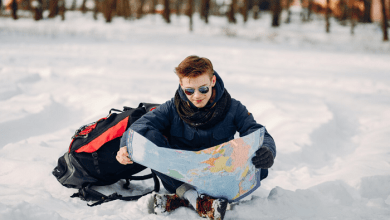
Traveling by car remains one of the most flexible and enjoyable ways to explore. People drive across cities, states, and regions to visit family, take vacations, or discover new routes. With that freedom comes responsibility, especially when navigating unfamiliar environments where traffic patterns and local driving habits may differ.
Modern travel involves more complexities than it once did. Roads are more crowded, distractions are more common, and drivers often encounter situations they may not expect when far from home. Understanding these realities helps travelers protect themselves and enjoy safer journeys.
Road Travel Is Changing for Everyone
Drivers today face a different landscape than those who traveled decades ago. Population growth has increased congestion. Tourism has expanded in many regions. Navigation apps route travelers through neighborhoods that aren’t meant for heavy traffic. Rental cars mix inexperienced visitors with local commuters during the busiest hours of the day.
These conditions introduce more uncertainty. A simple weekend road trip can involve unexpected detours, reduced visibility due to unfamiliar terrain, or high traffic volume in areas that are usually quiet. Even experienced drivers sometimes struggle to adapt quickly enough.
Many travelers have learned that road safety is not only about defensive driving. It also includes awareness, planning, and understanding how insurance coverage works if something unexpected happens during a trip. Policies vary, and drivers often discover that different situations require different types of protection.
Understanding how insurance responds to various scenarios is not about expecting the worst. It is about making sure that road travel remains enjoyable and manageable.
Travelers Face a Variety of Roadway Risks
While headlines often focus on extreme accidents, everyday risks contribute to most travel-related incidents. These risks include weather changes, unfamiliar traffic signals, wildlife crossings, aggressive driving behaviors, and sudden stops due to tourism activity.
Travelers can benefit from understanding the most common causes of roadway incidents. These situations often involve:
- Complex intersections in unfamiliar cities where drivers misinterpret lane markings.
- Parking challenges in crowded tourist destinations where vehicles move quickly in and out of tight spaces.
- Congested highways during peak travel seasons can reduce reaction time and increase stress.
Each scenario affects travelers differently, particularly when they are in a new region with different road norms than what they see at home. Awareness helps reduce confusion and unexpected hazards.
Preparing for Safe and Confident Travel
Preparation makes road travel safer. Even simple steps can prevent confusion or stressful moments. Travelers can benefit from:
- Checking weather forecasts for the entire route, including stops and overnight stays.
- Reviewing basic insurance details before leaving.
These steps encourage confidence and help travelers respond calmly if an issue arises.
Navigation Tools Help but Do Not Replace Judgment
Navigation apps guide millions of drivers. They help visitors reach locations without needing extensive map knowledge or local familiarity. However, technology does not always account for road construction, temporary closures, or confusing lane splits that may appear suddenly.
Travelers who rely on navigation tools often benefit from scanning the route in advance. This provides context and prepares them for complex exits or turns. Putting too much confidence in navigation apps may cause drivers to make last-second decisions that increase risk. Sound judgment and steady awareness help fill the gaps that technology sometimes leaves.
Parking Challenges for Travelers
Parking often creates unexpected difficulties during trips. Visitors may park in unfamiliar structures, narrow residential areas, or lots with unclear layouts. In these situations, visibility is limited, and vehicles may move unpredictably.
A few helpful strategies include choosing well-lit areas, avoiding overly tight spaces, and backing into spots when able. Parking thoughtfully reduces the chance of minor collisions or damage that can become stressful during travel.
Travelers also benefit from documenting the appearance of their vehicle before starting a long trip. This helps distinguish between pre-existing marks and new damage if something occurs.
Insurance Plays a Larger Role Than Many Realize
Insurance becomes especially important when traveling. Drivers assume their policies work the same everywhere, but coverage can differ depending on the state, policy structure, and circumstance. Understanding the basics helps travelers avoid confusion after an incident.
Unexpected Incidents While Traveling
Many travelers discover that the most challenging situations on the road are the ones no one anticipates. Sudden storms, debris on the highway, parking-lot damage, and sideswipe incidents can all occur without warning. Some accidents even happen when the responsible driver cannot be identified, which creates confusion about what coverage applies and what to expect next.
Situations involving unreported impacts or hit-and-run scenarios often spark questions about how insurance companies determine responsibility, how claims are processed, and which protections become relevant based on the policy a driver carries.
Situations involving unreported impacts or hit-and-run accidents require insurers to evaluate responsibility based on available evidence, policy details, and the circumstances surrounding the incident. Claims in these cases move through a specific review process that considers coverage limits, fault assessments, and any protections included in a driver’s policy. These unexpected events highlight how essential it is for travelers to understand what their insurance provides before an emergency occurs.
Staying Calm When Something Unexpected Happens
Even careful drivers can find themselves in confusing or stressful moments during travel. A calm, organized approach helps protect both safety and peace of mind.
Travelers who experience a roadside issue may find it helpful to:
- Pull over safely and away from traffic.
- Take photos of the surroundings and vehicle condition.
- Write down details while they are fresh.
This information strengthens communication with insurance providers or local authorities when needed. Documentation also protects travelers from misunderstandings during stressful situations.
Technology Improves Travel Safety but Requires Balance
New technology in cars provides helpful tools such as lane departure warnings, automatic braking, and blind-spot alerts. These features support safer travel, especially in areas with heavy congestion. However, drivers benefit from balancing these tools with personal attentiveness.
Technology can help lower risk, yet it also creates opportunities for distraction. Touch screens, alerts, and complex vehicle menus may pull attention away from the road. Staying mindful helps drivers use technology as an aid rather than a substitute for awareness.
Travelers Benefit From a Mindful Driving Mindset
A mindful driving mindset supports safe travel. It involves staying aware of surroundings, giving extra space to other vehicles, and allowing more time for unexpected delays. When travelers care for their mental and emotional preparedness, the entire driving experience improves.
This mindset can include maintaining a calm pace, taking breaks during long distances, and managing stress during busy sections of the route. A grounded approach helps drivers navigate unfamiliar environments with clarity.
Families and Group Travelers Have Unique Considerations
Families on the road balance safety with the needs of children or additional passengers. Group travel often means coordinating schedules, managing luggage, and ensuring everyone remains comfortable and informed.
Some families bring additional safety tools or communication devices for peace of mind. Others use checklists to prepare for rest stops, emergencies, or sudden changes in plans. Keeping everyone informed reduces tension and helps maintain a steady travel rhythm.
Travelers Can Support Safer Roads for All
Safe driving does not exist in isolation. Travelers contribute to road safety by practicing respect, patience, and awareness. Small choices such as yielding appropriately, avoiding rushing, and signaling early improve conditions for everyone sharing the road.
Communities with heavy tourism depend on visitors to drive responsibly. By traveling thoughtfully, visitors help maintain safer environments for both residents and fellow travelers.
Confidence Comes From Preparation
Confident, enjoyable travel begins with preparation and awareness. When travelers understand the realities of modern roadways, they can handle unexpected situations. Knowledge of insurance, local driving patterns, and simple parking strategies provides peace of mind.
Unexpected incidents can still occur, but preparation helps minimize stress. A clear understanding of how insurance may respond in situations involving a hit and run also supports a smoother experience when challenges arise.
Travel remains a meaningful way to explore and connect. With awareness and thoughtful planning, people can enjoy the journey knowing they have taken steps to keep themselves and others safe on the road.




